It’s extremely difficult to tell the difference between Russian Sage and Lavender if you aren’t well-versed in the two species. May be that’s why you’re searching for russian sage vs lavender, and I will try everything to end your search right here at this page.
They look similar from afar, have a slightly similar scent to the untrained nose, and can grow side by side without any conditional issues.
Considering their stark similarities, many traits can easily help distinguish the two from each other. These factors are important to a gardener who may wish to plant a specific flower, growing to a certain size and color to blend in with the rest of their garden.
Therefore, we thought it was necessary to dissect both species in a single article and present them in a way that shows a clear difference between the two.
There’s nothing worse than spending precious time, money and energy growing something completely different from what you expected due to a lack of knowledge. Let’s dive into the meaty bits, shall we?
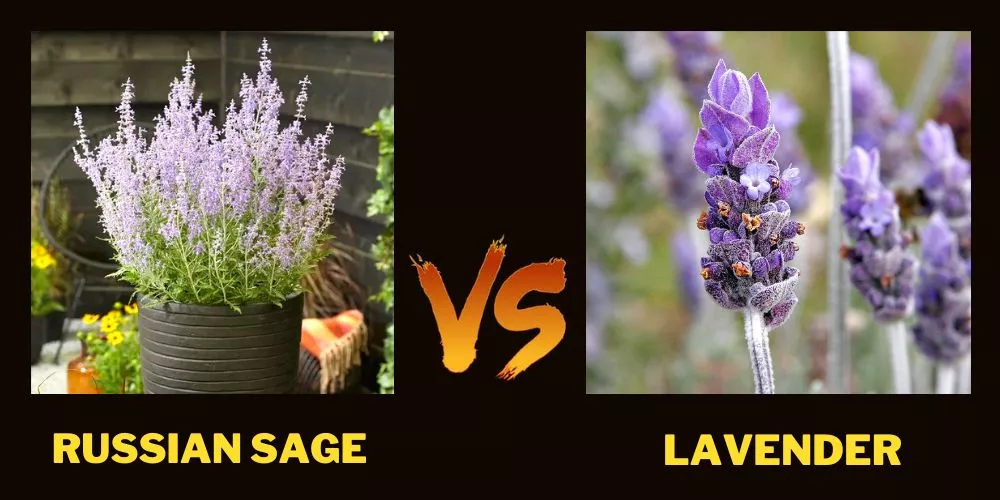
Table of Contents
Is Russian sage the same as lavender?
Russian Sage and Lavender are two completely different plants that are often mistaken for one another when grown side by side. However, on closer inspection, the colors, forms, and scents can help distinguish between the two with relative ease.
Lavender produces pink to pale purple to deep amethyst colored flowers, whereas Russian Sage is closer to periwinkle, purple with blue undertones.
Additionally, Lavender smells sweet and woody, while Russian Sage has a uniform sage aroma.
Russian sage: A Detail Overview
Russian Sage is a perennial shrub suited to a cottage style garden. They can grow up to 3-5 feet (0.9-1.5m) in height and bush sideways to around 2-3 feet (0.6-0.9m).
They have silvery-green foliage and grow periwinkle, purple with blue undertone colored tubular inflorescences (shape/form of flowers) at the tips of their long stalks.
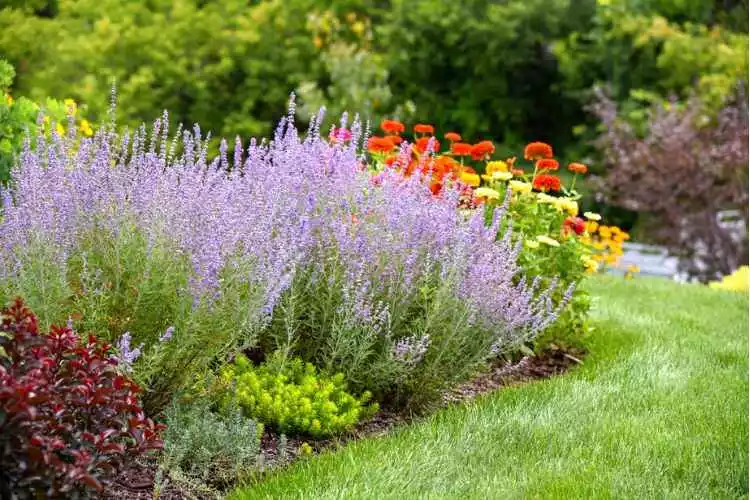
Their shallow form with a slightly open face allows easy access for seasonal pollinators such as bees and butterflies to collect nectar and help reproduce other plant species. These pollinators also help ward off mosquitoes and other smaller unwanted pests.
Check out the in depth comparison table below for growing conditions, pests, diseases and a range of other specs.
What is Russian sage good for?
Not only is Russian Sage a beautiful addition to a cottage style garden, but it has also been known to offer a small handful of other benefits, which include:
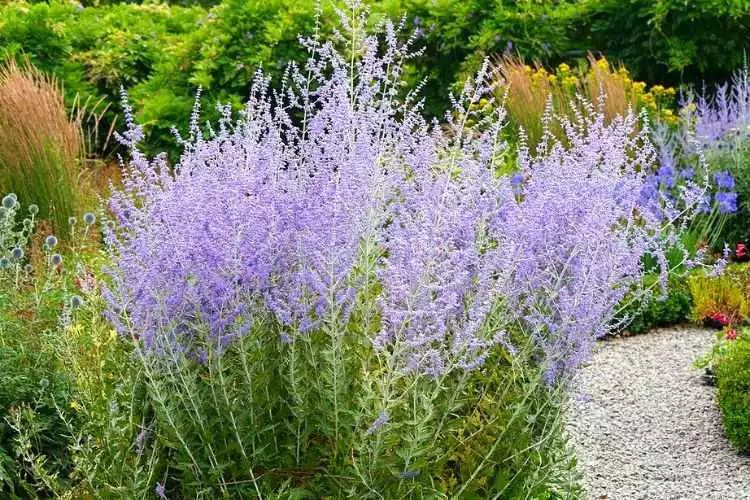
- Medicine – Russian Sage has been used as an anti-inflammatory by many cultures through the ages. It has also been known to treat diabetes, dysentery, fever, and scabies. The plant is boiled, made into a tea, and consumed orally to treat such health problems.
- Inhalant/Drug – Alongside being used as a traditional medicine, Russian Sage can also be smoked or chewed as a euphoriant. It is known for its transient psychoactive properties. The leaves of the plant are smoked or chewed like tobacco.
- Potpourris – Of course, the wonderful scent of the leaves can be dried, pulled and arranged in a container to smell pleasant. Potpourris pouches can be scattered around, and the aromas can act as a mild essential oil.
Lavender: A detailed Overview
Lavender is generally more common than Russian Sage. For as long as time has been recorded, this extremely pleasant smelling cottage style shrub has been cultivated and traded for its extensive use in the essential oils industry.
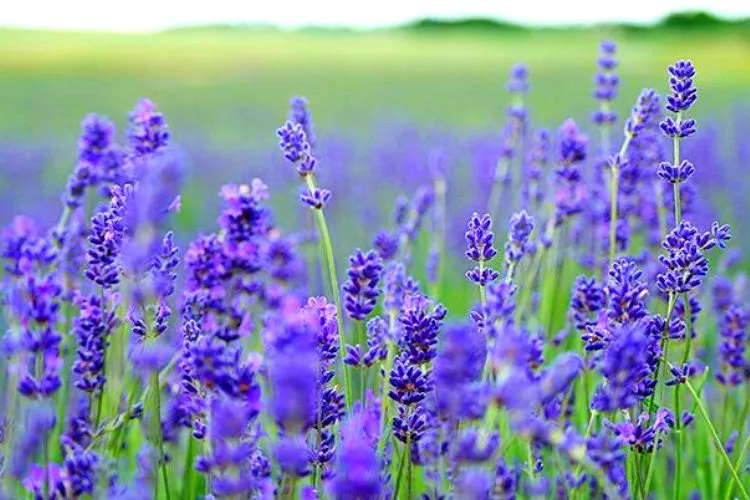
The French, English and Spanish have recently claimed this plant as their own. Furthermore, they have grown them to perfection whilst adding minor tweaks to suit certain growing conditions within the geographical locations.
Like Russian Sage, Lavender also grows silvery-green foliage, but its flowers are more pink to pale purple to deep amethyst. Some species can grow white and pink flowers, such as certain dwarf varieties.
Check out the in depth Russian Sage vs Lavender comparison table below for growing conditions, pests, diseases and a range of other specs.
Health Benefits of Lavender
Lavender is quite a handy shrub to have growing in your garden. The health benefits it brings are quite impressive. This wonderful smelling purple beauty is known in the world of homoeopathy for its ability to calm the nervous system down and assist with anxiety, depression, and fatigue symptoms.
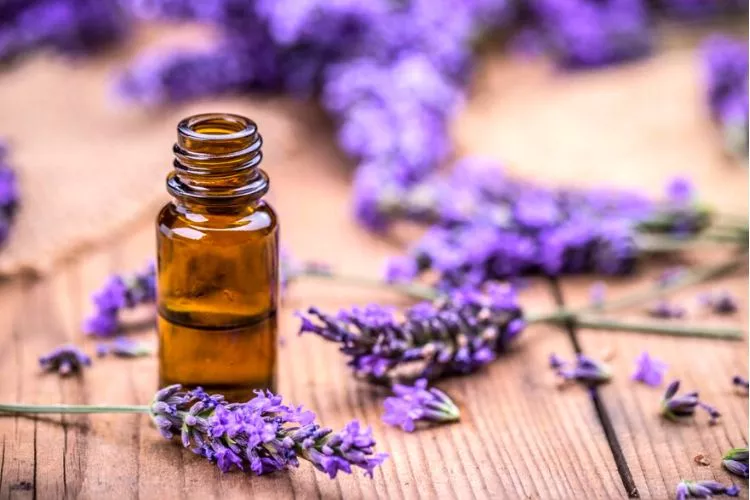
Its main use is aromatherapy via essential oils, which are added to diffusers. It can be used in conjunction with massage, cosmetics, olfactory and psycho-aromatherapy, to name a few. Some other health benefits of lavender include:
- Treating hair loss.
- Effective in subduing pain.
- Assists with respiratory problems.
- Rejuvenation of skin.
- Increases antibacterial activity.
- Promotes a healthy gut.
Russian sage vs lavender: What’s the Difference?
Besides the slightly different color and forms of each of the two species, there is another major difference. However, this characteristic may take a bit of patience for the untrained eye to discover.
Russian Sage and Lavender produce their respective blooms at different times during the year.
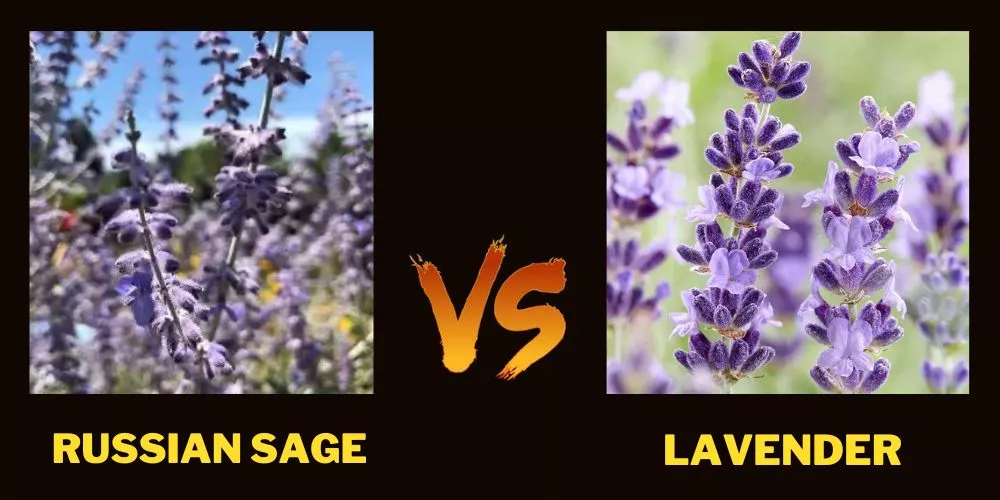
Lavender tends to produce their beautiful heads when the winter has completely subsided. This is usually in the middle of spring to early on in the summertime. Russian Sage, on the other hand, blooms a little later into the year. Their blooms can be noticed around midsummer and early into the fall.
Check out this russian sage vs lavender table to identify every key difference with ease.
| Russian Sage | Lavender | |
| Plant Type | Woody flowering ornamental shrub | Woody flowering subshrub |
| Flower Shape/Form | Fuzzy tube/lip shaped flowers, slightly larger than the lavender flowers | Tube shaped, whorl formation with 6-10 flowers in each cluster around the stalk |
| Flower Color | Silver/Green leaves with flowers that produce periwinkle, purple and blue undertones. | Silver/Green leaves with flowers that produce pink to pale purple to deep amethyst colors |
| Scent/Smell | Lavender with a slight hint of turpentine | Delicate sweet, floral, herbal, and evergreen woodsy smell |
| When To Plant | Late Spring (Northern Hemisphere) | Mid Spring (Northern Hemisphere) |
| Time to Maturity | 4 years | 2-3 years |
| Blooming Period | Midsummer/Early Fall (Northern Hemisphere) | Mid Spring/Early Summer (Northern Hemisphere) |
| Mature Size (Height) | 3-5 ft (0.9-1.5 m) | 2-3 ft (0.6-0.9 m) |
| Mature Size (Width/Spread) | 2-4 ft (0.6-1.2 m) | 2-3 ft (0.6-0.9 m) |
| Climate/Temperature | Warm 68-86°F (20-30°C) | Warm 68-86°F (20-30°C) |
| Sunlight Exposure | Full sun | Full sun |
| Soil Type | Loamy, well-draining | Lean and fertile, well-draining |
| Soil pH | 7.0+ (alkaline) | 6.5-8.0 |
| Water Requirements | Low | Low |
| Maintenance | Low | Low |
| Pruning | Winter to encourage Spring Growth (Cut down to ground) | Winter to encourage Spring Growth (Leave ⅓ of the plant remaining) |
| Spacing | 18-24 inches apart (more depending on variety and less if hedging) | 18-24 inches |
| Growth Rate | Fast | Medium until maturity then fast |
| Hardiness Zone | 3a-9a | 4 -11, depending on variety |
| Attracts | Bees, butterflies, hummingbirds | Bees, butterflies, hummingbirds |
| Disease Threats | Cylindrosporium leaf spot, Phoma stem canker, root rot, Sclerotinia stem blight | mosaic virus, crown and root rot |
| Pest Threats | Aphids, leafhoppers, slugs, spider mites, whiteflies | Aphids, spittlebugs, whiteflies |
| Usage | Bordering, cottage style gardens, cut and/or dried arrangements, hedging. | Low barriers and borders, containers, cottage style,rock/gravel gardens. |
Lavender or Russian Sage: Which Is Better?
Suppose we had to choose one of the two equally beautiful plants. We would probably lean more towards lavender. Lavender is more widely known, smells amazing, and has a lot more proven usage.
We have a heap of it growing in the yard, a plant we adore and cherish.
Which Plant Should You Choose According to Your Preferences?
Choosing between these two plants is no easy task as they are extremely similar in many areas. If you are slightly impatient, then lavender is likely the best choice. Lavender can fully mature in 2-3 years, compared to the 4 year timeframe that Russian Sage can take.
Furthermore, lavender blooms slightly earlier also. Watching the beautiful colors shoot out in the springtime depending on where you live can cure any winter doldrums.
This further supports the need for adding some lavender to your garden. Personal preference will override any persuasive efforts we may have in this article.
Frequently Asked Questions (FAQs)
Can I plant Russian sage and lavender together?
Russian Sage and Lavender can be planted together. They have similar growing requirements, including soil type, sunlight exposure, climate and water frequency. Additionally, they attract the same ‘helpers’ such as bees, butterflies, and hummingbirds. These bugs and birds assist with pollination and pest removal.
Does Russian sage repel mosquitoes?
Not only does the scent of Russian Sage repel mosquitos, but also the ‘helper’ bugs and birds that it attracts. Bees, butterflies and hummingbirds will fly around eating and ward off those pesky mosquitoes without fuss.
What to do with Russian sage?
Russian Sage can be formed into a hedge, used as a backdrop for other plants or even grown as a stand alone. Additionally, it can be consumed as tea, chewed and/or smoked. It is known to have many medicinal benefits and can be used as a europic. Thorough research should be completed before using it in this manner, though.
Conclusion:
The fact that Russian Sage and Lavender have so many similarities makes it difficult to decide which to use. We hope that this article on russian sage vs lavender has helped to distinguish between the two and decide which may suit your garden setting best.
Thanks for tuning in, and as always, happy growing!


